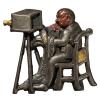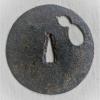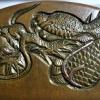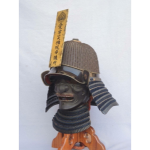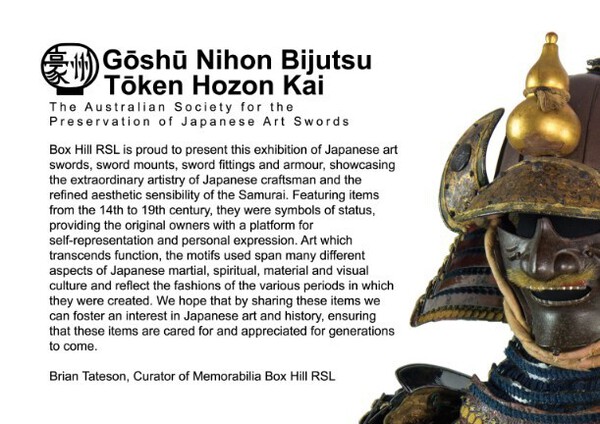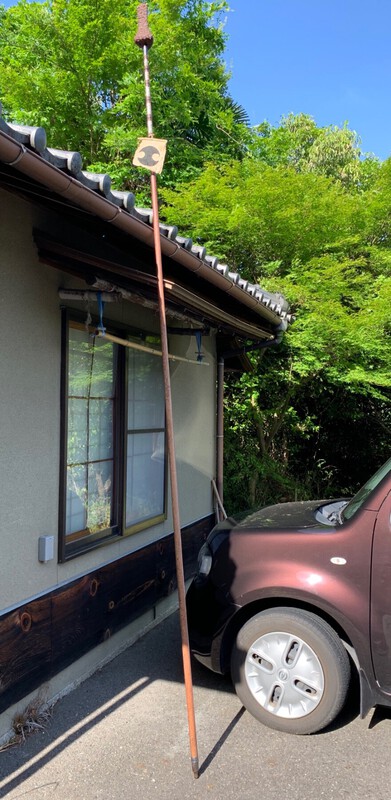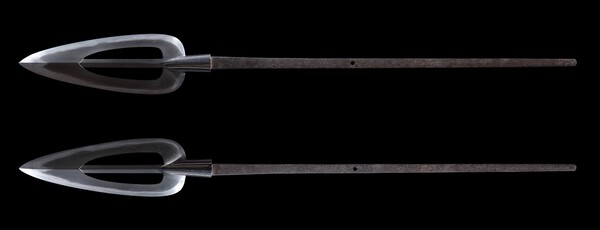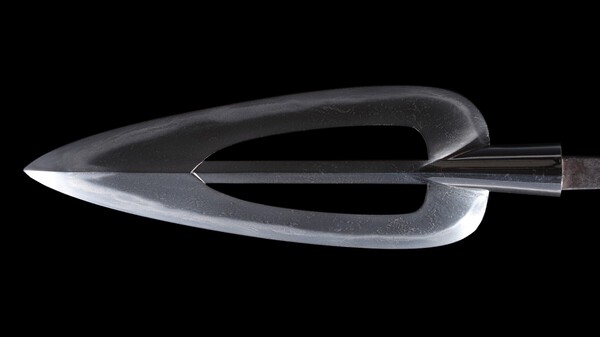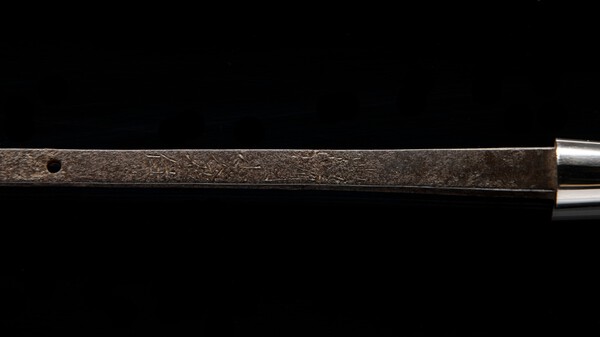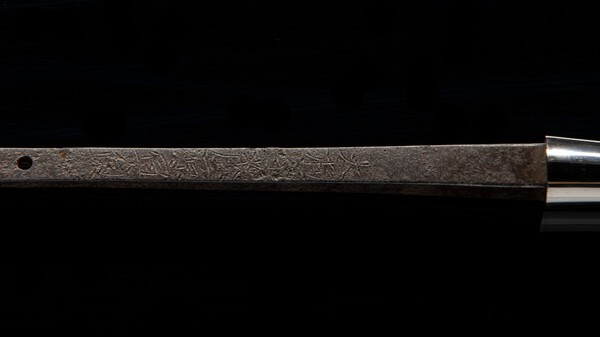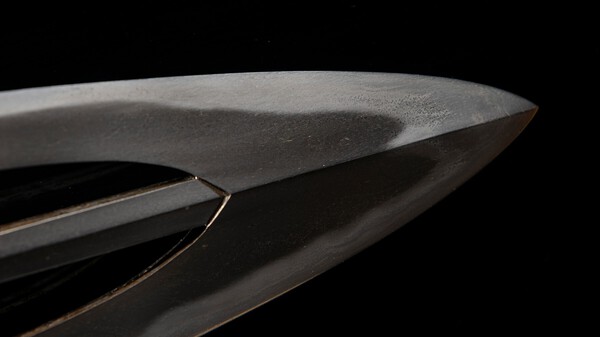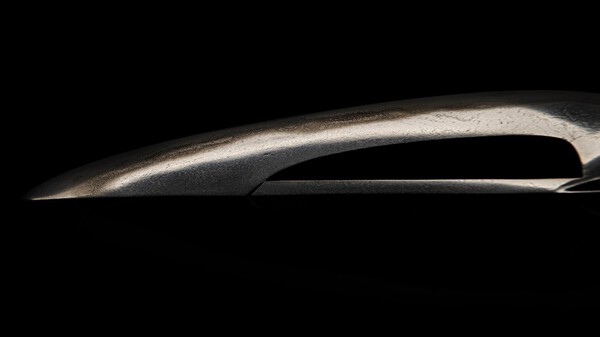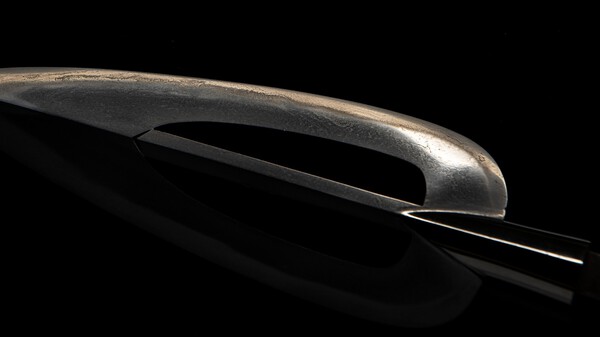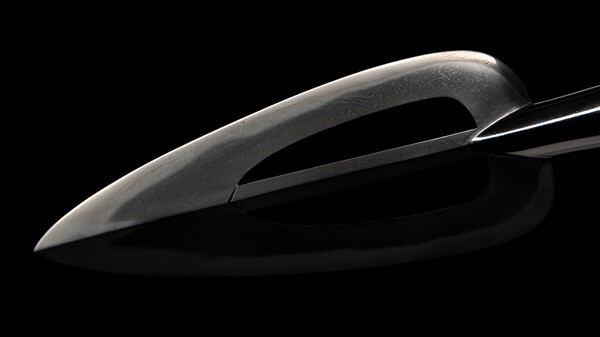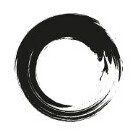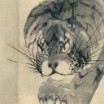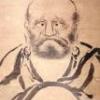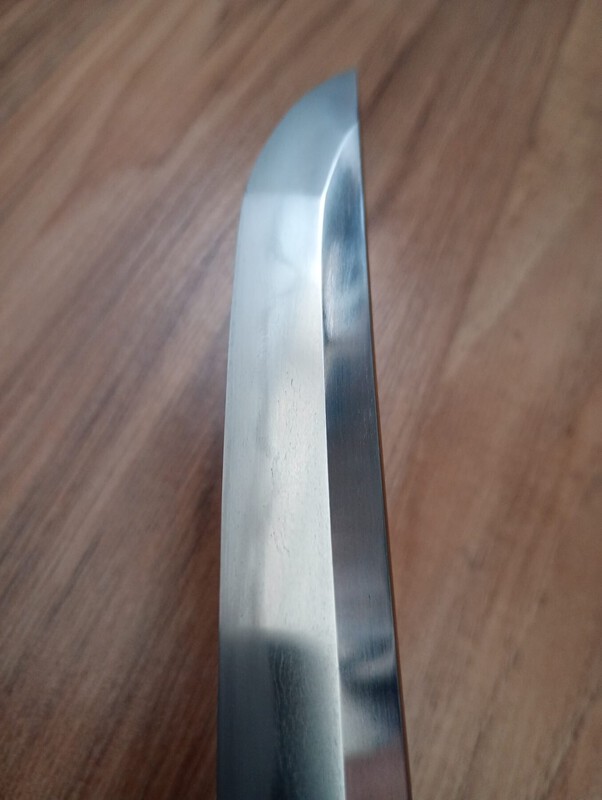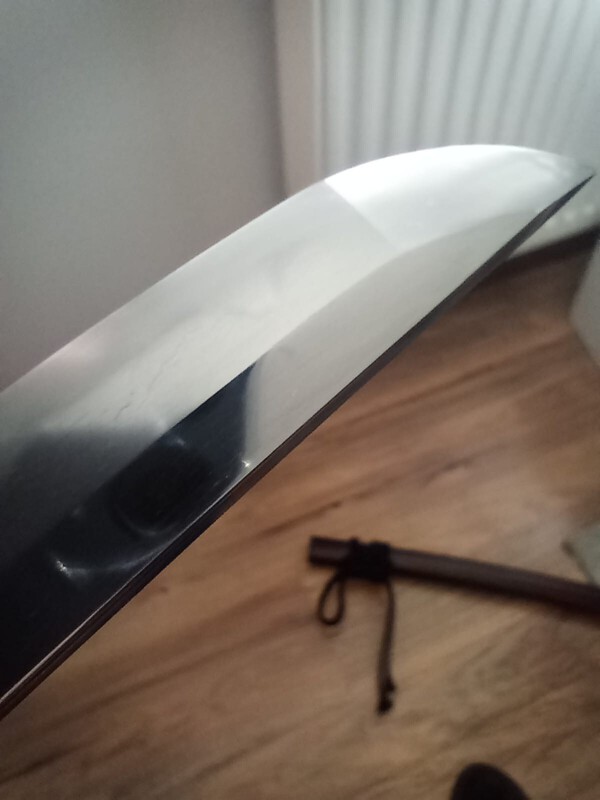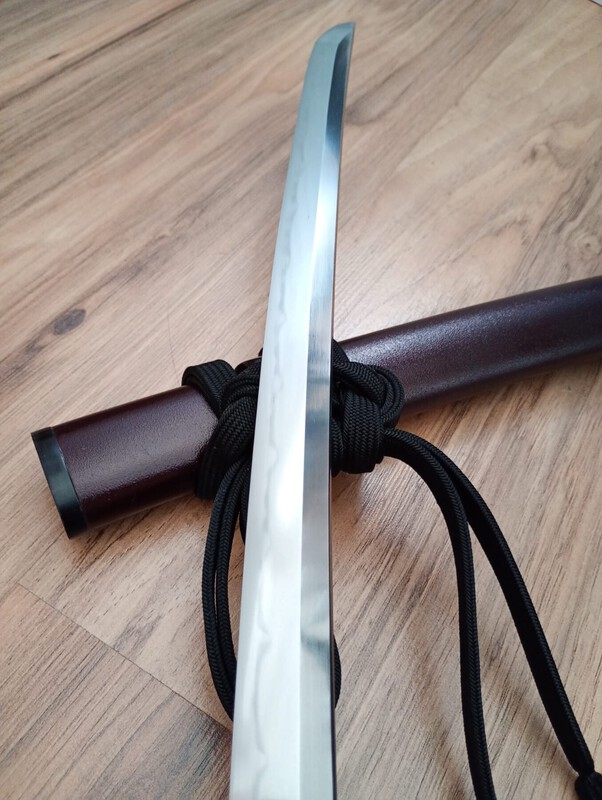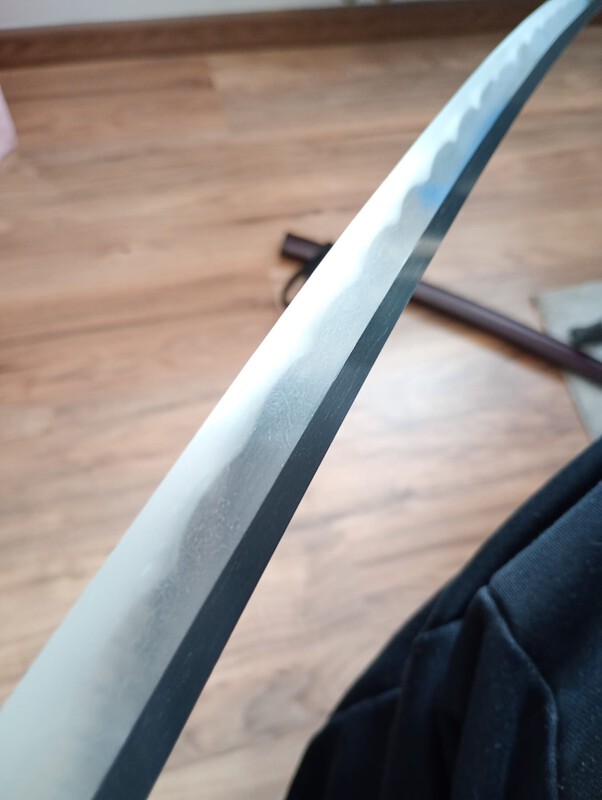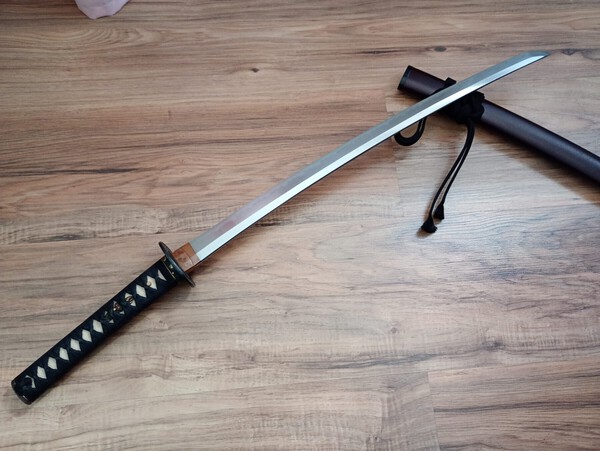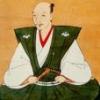Leaderboard
Popular Content
Showing content with the highest reputation on 11/27/2024 in all areas
-
Quick update on the blackpowder displays this autumn. We had one every weekend from the end of September until the 17th of November, meaning very heavy usage, with much cleaning and repair of guns and armor. The most recent event was for the Martial Arts Kobudosai where we fired our big guns indoors, nearly blowing the roof off the place. Nine matchlock tanzutsu/bajozutsu pistols. Hand cannons: One 20 Monme big gun. "Ni-ju Mon-me!" Three 30 Monme followed. "San-ju Mon-me!" Three 50 Monme next. "Go-ju Mon-me!" Two 100 Monme for the finale. "Hyaku Mon-me!" (1. Short 100 Monme hiyazutsu for firing bo-hiya or flaming bolts. 2. Long 100 Monme gun.) (Many thanks to Peter in Belfast and Anthony in Stockholm for sourcing the two largest guns for us. Both are lovingly used and looked after.) WARNING! NOT office friendly In December, at the request of the tourist board, there will be a (chilly) evening double-header with thunderous flashes in the grounds of Okayama Castle, on both the 7th and 8th, ...and that should finally wrap up the year. Phew!6 points
-
5 points
-
I seem to be late to the party, as usual. First off, if you can, stop using preypal for foreign transactions. Not only do they stick you with some pretty stiff transaction fees, but they also give you a crummy exchange rate - and.... the sellers often add a fee on top of that, since they don't want to pay for preypal either and they often expect you to. If your brokerage will do international wire transfers that works, but for the smaller amounts the people here seem to want to spend, you should contact your agent and see if they can use wise for transactions. the fees are like less than 1% and you get an excellent exchange rate (forex usually - really close to spot). Second, if you're treasure hunting, you should be hunting treasures. It is distressing to see particularly new (and sometimes not-so-new) collectors putting up pieces that are not well composed or executed, have poor workmanship, or bad condition problems (a coating of thick corrosion is generally not a good thing (except when it is - and ya gotta know when not to touch it - I have seen lovely ko-kinko pieces converted into pieces of indeterminate age by extreme cleaning - terrible)), etc. Diatribe about various cleaning, etc you can and really can't get away with (finished product will look "bad" when compared to a cared for one) omitted. You can go down the whole dark path with "fixer uppers", but really, it is better to just avoid them. There are a surprising number of pieces out there that are never going to be worth a lot, but they are in good condition, are well executed, etc - Rich Turner always called these "cheap and cheerful pieces". And there is a surprising number of these up almost all the time (with no or very very small problems). You can also get a deal if you are looking for a certain group or design or style of piece by buying what the Japanese don't want (wakizashi or tanto sized pieces, unsigned kinko that shouldn't be, etc). There is a difference between wabi sabi and corroded wrecks that are best given to the scrap man... I hate to say it, but this comes back to not knowing what good piece looks like. you can look in a book, but you would probably do better to try and see Known Good pieces in hand (go to shows, good museum collections, other collectors, etc. Third, fakes.. There are a lot of them, including several sellers on Yahoo!Japan that are selling complete fabrications - pieces that must be made by weekend warrior amateur tsuba makers they are usually a little "off" compared to what they are aiming for, have weird looking sekigane, etc - and sometimes these get bid up to crazy prices. And... there are a couple of sellers who seem to get ahold of old pieces, ruin them, and throw them up on YJ (they are the real deal, but they appear to have been sanded down, have an awful patina, etc)... Discouraging. On top of that, most of the volume sellers are dealers now, and they mostly know how to photograph stuff - to minimize or outright hide problems (not really a fake problem, but the pieces look far different in hand or when photographed to show everything). Getting borderline dross is just a waste of your money IMHO. Earlier in the year I actually bot some lower cost pieces mostly for photo testing. A lot of them are in a condition where I can't sell them in good conscience - and I'll probably just give them away soon - maybe on the NMB for shipping and a donation to the NMB or something. Just because I gotta put up an obligatory image, here's one. I bought the piece as a "catch and release" testing mei shooting on funky surfaces, etc. From the auction pictures you couldn't tell that the webs were partially eaten away, the surface has a pretty violent tsuchime - it looks like somebody took a punch or a hammer to the surface (it is "supposed" to be hammer work, but I've never seen something like this), you could not see the amida bori, etc. this is similar to a piece posted earlier in this thread: and maybe I should have put up a bigger version... oh well Best, rkg (Richard George)5 points
-
4 points
-
4 points
-
Front/ omote Mogarashi (藻柄氏) Nyūdō Sōten sei (入道宗典製) Back/ ura Gōshū (江州) Hikone jū (彦根住)2 points
-
Okan, a bit snarky. It was exactly as I said. A friend acquired it, I shot a single photo and asked for any info that could be provided. i didn’t buy it, don’t own it and am not selling it.2 points
-
Keep rubbing it every now and then with a soft cotton cloth, it will pick up a glossy finish eventually, sun exposure can also help. I think it will look much better over time, you did a good job to get rid of that "pork crackling" rust [A term I just made up ]2 points
-
Not averse to searching for low cost value for money, hence started a thread in the members area regarding budget items. I put it in there for a reason as didn't want the elitist brigade on my back lol. Was thinking maybe folks could post stuff in there that they come across, should they not want to buy it. Assist someone else gain a good deal on something that one may not come across too often, something that has something about it. Even stated would buy such an item. Not talking about every day junk you see on Ebay. Gave that up years ago as become sick of sifting through trash and anything that was good, was the same price as what you find on dealer sites anyways. Would one make a collection out of such items and spend a great deal of money? No.2 points
-
Check this out: Clause 2 discussion. Short version: "Nick Komiya in his Rinji Seishiki to Daiyou Seishiki Weapons Specs thread has uncovered specific documents detailing the conversion of this Clause 2 stamp to mean "Article 2 of this regulation defined Daiyo-Seishiki-Heiki as “weapons in specifications employing substitute materials in its component(s) or redesigned to conserve materials" or more succinctly "Substitute-Spec Weapons". Late war mil spec changes allowed non-standard materials and non-standard production in many weapons, including swords. The circled 2 originally would indicate the weapon could not be used for combat and should only be used in training. But the late-war reg change also changed the use of the stamp.2 points
-
Yes I have noticed the smaller pieces are often much cheaper or even overlooked - I can't work out why myself, they take as long to make, maybe even more work involved - big is not always better. I am often amused by some sellers posting very dark images of tsuba they are trying to sell - Don't they have enough money for electric light or do they live in a coal mine? It automatically makes you cautious! This guy, I call him the "backyard blacksmith" https://www.jauce.co...j2hmyuc?search=tsuba He usually has more stock, but I think he is busy at his backyard forge getting next weeks designs done. He still needs some work on his patina which is always black and oily looking.2 points
-
小烏丸 – Kogarasumaru (I guess that the inscription mistakes 鳥 for 烏.) 来國房 – Rai Kunifusa FYI, Genuine Kogarasumaru Kogarasu Maru - Wikipedia2 points
-
You forgot the deposit fee. Add in Elon Musk taking his cut from any Paypal transaction + his very far off from current exchange rate conversion. [No wonder he is the richest man on Earth - he has taken all OUR money!] One aspect you may not have experienced yet with Jauce is that they have a loyalty policy - if you have been a long term buyer from them, they do give a credit rating amount on the basis that you have paid all previous costs. The credit allows you to buy things when you may be a little short of funds temporarily, but they will send a "hurry up and pay" if you haven't topped up your account within 24 hrs - I believe it took me eight years to win their credit trust! I am sure they don't fully trust "foreigners" Almost anything you find on Jauce can also be found on Yahoo JP and Buyee who have their own system of payments and fee structure, so it may be a good idea to check them out, they could be cheaper or offer sales on credit like ebay. I use Jauce because I find it easier to locate items that way but it is relatively easy to use Jauce as a search tool and then track down the same item on one of the other platforms. Each item has a unique code at the end eg. https://www.jauce.com/auction/1162767573 This part of the code 1162767573 can be pasted into a Buyee item say https://buyee.jp/ite.../auction/h1162219928 and end up with https://buyee.jp/item/yahoo/auction/1162767573 where you end up with the same item on a different platform. I hope that makes some sense.2 points
-
I’m a new collector and am currently fixing to buy my first Tsuba from a Japanese dealer. I’ve been reading the Tsuba section for some time now, and as John stated, my first Tsuba will be a papered one. Not Tokubetsu Hozon, as they are very expensive, but a regular NBTHK Hozon. It is $400. It will be a good piece for learning and studying. This way, as a beginner, I will know exactly what I’m buying. ps: Last month, I used ebay to buy my first tsuba book.2 points
-
Hi. Today, we completed the installation of a display here in Melbourne. It's a nice display, worth visiting. The venue, Box Hill RSL, is quite large with restaurant, cafe, bar, and is very busy. We have displayed a good cross section of samurai art. The backbone of thr display is Colin McDonald and kudos to him. It will run for about 1 year, with most items being changed every four months. I'll post more details over time. If you'd like to know more please message me. Mark2 points
-
Hello Jason (and also Sam since I saw his recent post on this thread). I started this thread to try and help new collectors negotiate the labyrinth of tsuba that are on eBay and maybe give them some useful tips. And I do love my pieces, so I will keep doing what I have done for the past about 6 years. My philosophy is “never change a winning game, always change a losing game”. I feel that I have been winning in the way I acquire my pieces from eBay. I have tried Jauce (and have acquired one piece from them). But it was not a bid (like I stated before, bidding is not for me!), it was a buy it now. I found out that with putting a required amount of money in Jauce before you can purchase, and with all the added fees attached and then the shipping; it just about equals what I could have bought the same tsuba for on eBay (especially if I communicated with the seller and was successful in negotiating a lower price with him for the piece). Not only that, but the eBay pieces arrived in a timelier manner than the Jauce piece. As I stated somewhere else on this forum (darn it, can’t remember the thread!) I am not interested in selling my tsuba. I don’t purchase them to turn them around and make a profit (as I am sure many other collectors do). I buy them, learn from them, give the lower quality tsuba a good home (until I pass and move on, as my collection will also move on!), and enjoy them by hanging them on several walls of the house and viewing them every day! Also, I know that I have been fortunate enough to purchase quite a few quality pieces on eBay for under $150. I know that because I have a very knowledgeable friend that studies tsuba and I have shown some of my tsuba to him and he has stated that I got a great deal for the price that I paid! So, deals can still be had on eBay. You just have to learn to discern and know what you are looking at (and you can always contact the seller and ask questions about the piece). And yes, (and I also know I stated this on another thread-but again old age has made me forget where; I have to blame something!) I have been bit once or twice on my eBay purchases because of misleading seller pictures or other information. But when I get bit, I don’t lose much money compared to someone else that has deep pockets and spends a lot more for a tsuba. And when I have gotten bit, I have spent less than what many known and stated as such reproduction tsuba cost. So, not a big loss and they still end up on my walls! We all collect in different ways and for different reasons. I personally enjoy the challenge of finding a nice old, showing signs of possibly being mounted on a blade, possibly rusted (more than likely!) tsuba on eBay for about $150 (sometimes a little more, sometimes less). Hey, that is just me! Onward!2 points
-
Sometimes truth is stranger than fiction. When a friend sold this yari to me, about 10 years ago, the pole at nearly 13 feet long stuck out from the front window. I had no red, so tied a white section of cloth to it. As I pulled out onto the main road, I saw a police car coming up right behind me. I think the law says anything outside the outer dimensions of the car must extend front or back, but not sideways. It was a sweaty nerve-wracking drive, and the dang police vehicle followed me almost the whole way home, for a good thirty minutes. Coincidence that they were on the same route, was it, or were they checking to see if they could book me for something? Anyway, eventually they turned off, and I breathed a deep sigh of relief. That was the story of taking it home. Well, you will not believe this, so I will not bother swearing on the grave of my mother, etc., but yesterday I had the pole sticking out a good three or four feet from the front window. I had wrapped it in a towel so it would not either bust the window or mark the yari, and then I placed a long red gun cover over the external protrusion, tied that firmly in place, and somehow made it down the drive, avoiding the overhanging bushes and trees. The gun bag was flapping mightily in the wind, the whole pole shaking as if in full Sengoku battle. As I was getting used to driving this extra-wide load in the rush-hour traffic, my hand on the pole, trying not to spear any cyclists, a police squad car appeared in my rear-view mirror, two or three cars back. NOT AGAIN!?!?! One by one the intervening cars peeled off and finally the police were right on my rear bumper! In the mirror I could see them there in the front seat consulting each other, but all I could do was sit in the traffic jam as we inched forwards, me sweating buckets. Would I have to pay more for the privilege of owning a long yari (yes, I had removed the blade!) with points on my license and a hefty fine? And what would I do with the damn thing if they told me to pull over? I stuck to just inside the centre line to take the widest possible berth. The tension in the pit of my stomach was killing me. Well, they did not switch on their lights and siren, but I did notice that they had moved their squad car closer to the side of the road, ...almost as if they were covering for the pole! I guess they were behind me like that for 15 minutes of so of my journey, finally pulling off and heading away up to the university. The whole slow drive took me an hour and a half to get the vibrating yari to its new home. Luckily the wife was away this week, so I was able to shift bits of armour and various other 'non-household' things. Phew! Posted before, but once more to help grasp the size of the problem.2 points
-
I am offering for sale a very rare type of Yari - Yajiri nari Yari by Yamato Nobusada (around 1630) NBTHK Tokubetsu Hozon Mei Omote: Yamato no Kami Fujiwara Nobusada Mei Ura: Buzenkokura jū Nagasa: 18.4cm Max. width: 5.58cm Kasane of kera-kubi 1.81cm Blade weight 322.5g with shirasaya Price 4.600 EUR + postage + PP fee Shipped from Slovakia1 point
-
Grey and i picked up a tsuba. We are having trouble understanding the inscription. We see left --- Masa Toshi Saku Kore so we think Masatoshi made this but i guess maybe it could be read differently like Sho??? right side -- we are lost, maybe O (Nori Toku), Aki , Hiro, Tsune ???? probably completely wrong Also we note the Hozon paper uses a different kanji for Toshi, so we are not sure if the paper uses an abbreviated form of the kanji on the tsuba or maybe the NBTHK knows who this is and the maker used this other kanji as well ?? any help appreciated, thanks Mark and Grey1 point
-
I’ve had this tsuba for about 35 years but I know absolutely nothing about it. I was wondering if anyone had any thoughts? It has no markings, it’s the same design on both sides, it’s made of iron with some kind of yellow metal inlay. Any comments would be very much appreciated.1 point
-
Can you share the picture please? Cause the one you've shared is a screenshot from the ebay link.1 point
-
Moderate to severe rust will destroy the patina underneath, likely that it was long gone and you removing it revealed the state of things underneath. Looks pretty good and as others have said it'll (slowly) come back over time. I'll echo Jean's statement while mixing in some periodic cloth rubbing to clean up the surface. Keep in mind, this isn't an overnight process. Patience is key. I had a light spot on an Owari guard I previously owned (which are generally known to be fast healing) and it still took a couple years to fully blend in.1 point
-
This is a recently acquired Kanayama tsuba "study piece" costing just over $300 on a Jauce auction. It has a massive seppa-dai and large lump-type tekkotsu concentrated on the upper mimi clockwise between 7 o' clock and 1 o' clock (two are shown in pic). There is a slight dishing from mimi to seppa-dai. This is a genuine Kanayama, but has some unusual variant features. The motif on the left and right of the seppa-dai and forming the hitsu-ana is often referred to as "sea cucumber" (namako) and made famous by the tsuba of Miyamoto Musashi. However, I highly doubt that he was thinking of a deep sea creature to decorate a sword fitting when he adopted this abstract motif as part of the simple and symmetric composition commonly found in Kanayama tsuba. This tsuba is almost certainly a product of the Momoyama Period with a lively flow of curves in the composition that is mesmerizing and evocative of Wabi Tea and Zen Buddhist aesthetic principles including wabi, sabi, and mono no aware. For me it is also an especially powerful evocation of yugen (mystery). Beyond the tekkotsu there is variation in thickness going around the mimi and the seppa-dai, which exaggerates the rustic spirit of the overall effect. The surface has an unusual appearance comprised of an exaggerated and coarse cobblestones/craters (not sure if it can be described as tsuchime-ji) interrupting a beautiful yakite-shitate surface treatment. This seems to be an intentional aesthetic expression rather than reflecting any corrosion of the patina, which has a lovely color. There is an almost identical example of this tsuba in "Openwork Tsuba" by Kenichi Okubo, et al (page 192) that is more of a classical Kanayama tsuba in its features. The major differences are that the width of the motifs on either side is even less uniform in my tsuba, being thinner at the center so as to create almost the appearance of upper and lower lobes, it has a massive seppa-dai measuring 47 x 27 mm (reminiscent of Ko-Shoami), and it has an unusual linear gouged tagane pattern around the entire nakago-ana. It appears to have been mounted many times, which may attest to the aesthetic value placed on this tsuba. There are a few other similar pieces found on my Google search, but they are linked to NMB posts that apparently no longer exist. The major differences are whether there is a kogai hitsuana or if both are kozuka hitsuana, and whether the curved element that forms the hitsu-ana is joined to the mimi in a more round shape (relaxed), such as in my tsuba, or at a more acute angle (stiff) as in the reference piece below. Diameter: 76 mm Width: 5.7 (mimi), 5.0-5.3 mm (seppa-dai) Weight: 97 gm1 point
-
Hi Michael, Time, experience and research are your friends. Many of us jumped into this with both feet and regretted it (a bit) later so taking your time and expanding your knowledge and budget will not do you any harm. Other big US shows are in Orlando and San Francisco if that helps: https://orlandoswordshow.com/ http://www.ncjsc.org/SF_token_kai.htm1 point
-
Interesting finding, a Tanto in Wakizashi Koshirae + Katana. Tagged as Daisho by AOI. https://www.aoijapan...n-osafune-kiyomitsu/1 point
-
Hi, I regret that I don't have professional pictures of this sword to show the beauty of it, but I will try to add some more for your insight. I will complain (as every seller) that price IMHO is a bargain. Beautiful early EDO blade and renovated Koshirae. Ideal for display. No customs within EU. Cheers!1 point
-
Hi Michael, Exciting to get into the world of Nihonto! I'm right there with you. There's a sword show in Vegas coming up this January - a good excuse for a trip! For what it's worth, many of us perfectly enjoy our sub 10K swords. You'll still be able to enjoy finer swords from afar. We all want the best, but don't let that keep you from what's realistic for you. I love my BMW, knowing it's no Rolls Royce At your price range and into low level juyo, you will have a lot of interesting pieces to choose from when the time is right and you have the knowledge. Best of luck, -Sam1 point
-
Plan is changing as I learn more. 1. Continue my education - learning more everyday. 2. Thinking about raising my budget to entry level Juyo Token ~3.5 mil yen? (Seems to be an easier range to recover investment should I find something else I might want instead) I chose this approach as it seems easier to be ignorant when buying than going sub 10K? 3. Start buying YEN at favorable exchange rates. (loading up my wise account) 4. Maybe buy a sword in Japan with assistance from a guide or just buy from one of the amazing trusted local dealers 5. Skip having custom Koshirae made since I will never have a high end sword put in it. I will keep in shirasaya and display a period correct koshirae with it. 6. Seriously consider if I should even make a Nihonto purchase and just admire from a far.1 point
-
Deanne, you did well to remove the red rust! Now a good patina can build up. Iron TSUBA should be "cuddled" with bare hands quite often as this will help build up the protective black iron oxide layer. This process will take some time so be patient!1 point
-
1 point
-
You aren't selling yours are you? https://www.jauce.com/auction/h1162893289 No not enough "lobes"!1 point
-
Posted upside down but that is ok. Better than this design Aoi leaves [mallow] a symbol of longevity, top and bottom. I am less sure of the long thinner leaves around the seppa-dai. Sen-zogan a metal inlay technique in which thin lines of metal are inlaid into a surface. Kebori (?) hairline thin carving of the lines making up the veins of the leaves. I am not at all sure of the school. A nice piece, similar to a friend's who I hope won't mind me sharing his image. also a rather grainy image that looks like it has a Manji pattern on it which would make it Heianjo perhaps. Someone will have a better idea of what school or time period your piece is I am sure.1 point
-
Hi Seth! Those are tough ones, as they are likely not fully/cleanly struck. I suspect the one by the numbers and the top one on the nakago mune is the Clause 2 stamp, but it is much smaller than any I've seen before: On the mune, I'd say the Class 2 and below it, a very partially struck Seki stamp. Pardn my poor photo-shopping:1 point
-
Hey John, Are you really advising new collectors to, as you stated, “Just buy good quality tsuba (fittings etc) from trusted sources, ideally papered so you know as well as you can that you’re getting what you pay for.” Now, I am sure you are aware that a papered tsuba can cost anywhere from (perhaps) 4 to maybe 10 times as much as a non-papered tsuba! And then there are those tsuba that are papered, but with the dreaded green papers! I know there must be a forum thread or something that discusses all the different certification papers that are out there, but I can’t find it. I think that a reference source to the different types and colors of certification papers (over the years) may be helpful to new collectors (maybe if someone were to start another more recent thread on the subject).1 point
-
Yes, KANEIE style, not school, I think. Late EDO might also be correct.1 point
-
Hi Peter, It could be Kaneie but if it is, it is late - seems like too much inlay and in various colours. Kaneie was more known for a sparing amount of gold inlay - less was more, at least in the early works. Gimei usually have a signature - it was the selling point even when it was obviously not true. No signature would suggest to me it is not trying to be a Kaneie but might be following similar designs. Shoami? [Yes I know a bit of a "catch-all"] Minimal inlay - prominent signature. Signed Fushimi ju kaneie, circa 1650-1750. Someone with more knowledge will point us in the right direction.1 point
-
1 point
-
1 point
-
The only trouble with this statement is - Who can tell what are the most important works? Several times people have said you need to wait to get the very best - but who says what is the best? That is always a personal judgement based on experience. New collectors don't have that experience and should not be force fed the opinions and tastes of other people. We would all love to collect the absolute best but I will guarantee that each of us will have a different view of what that means. Price never guarantees anything, so we can rule that right out of the equation. JMHO1 point
-
You don't have to address this, that only one person's opinion is the most significant one when it comes to collecting and studying. I get that you may not afford expensive tsuba on a month to month basis, but some of the beginner collectors might want to wait a couple of months, even years, before making a new purchase... Like most of us do here.1 point
-
I just bought a book from Grey and he is in Duluth,MN which is only a few hours from me1 point
-
This is one of the typical blades that is better viewed live in your hand. Pictures are not enough here.1 point
-
1 point
-
Hmmm... Not sure where this idea came from, but it is quite inaccurate. There are a good handful of pre-Edo tsubako who regularly signed their works. Among them are the two Nobuiye, the two Kaneiye, the early Yamakichibei smiths, Hoan, Sadahiro, Umetada Myoju, Umetada Mitsutada, and Koike Yoshiro Naomasa. So, not only were there pre-Edo smiths who regularly signed their tsuba, but each of these artists is generally regarded as one of the very finest tsubako of any era in Japanese history. This doesn't have much to do with the OP's concerns, but I did want to respond to that statement for educational purposes...1 point
-
1 point
-
1 point
-
1 point
-
There is a consideration on the motif by Ito Sanpei. Ref. 無銘金山鐔「山道文透かし」鐔 He suggests that the motif is 山道文 – Mountain road pattern1 point
-
Hectic times here. We have blackpowder displays every single weekend until the double on 7th and 8th of December, so 10 in total including last week at Tottori Castle. On Saturday and Sunday we had the local NBTHK sword society display with some lovely things in glass cases. One corner was set up for the public to try their hand at tagane work. One wall was for a teppo display, which was my watch. With one Satsuma long gun from the south-west, and two Sendai guns from the north-east, I was finally able to complete the display I have been dreaming of, two tables with various guns representing many of the regional manufacturing areas throughout Japan. I used the green felt cut-out for the four islands. Honshu Sendai long gun Sendai 30-Monme 0-zutsu hand cannon (Date Masamune) Matsushiro (Takeda/Sanada) long gun Kii, Wakayama 20-Monme O-zutsu hand cannon Kunitomo pistol c.1610 Bizen pistol Bizen long gun Choshu long gun (Mohri) Shikoku Iyo long army gun, made to order in Nanto (Nara) Yamato Kyushu Kumamoto Castle long army gun (Hosokawa) Satsuma long army gun Apart from the nigiri deppo, for added variety, all the above were matchlocks. (Kept four back in reserve, so as not to clutter)1 point
-
1 point
This leaderboard is set to Johannesburg/GMT+02:00





